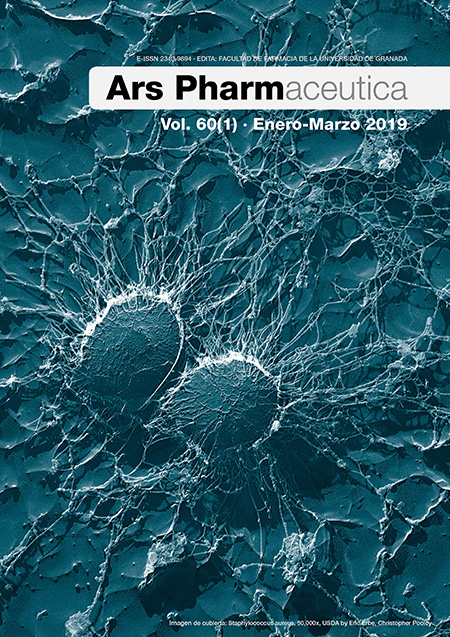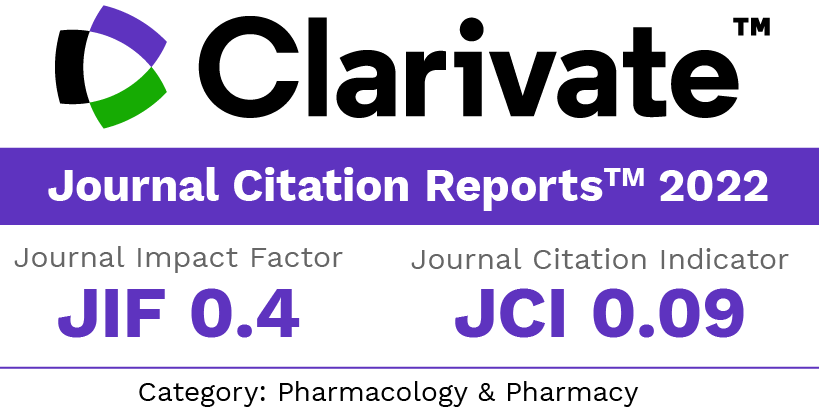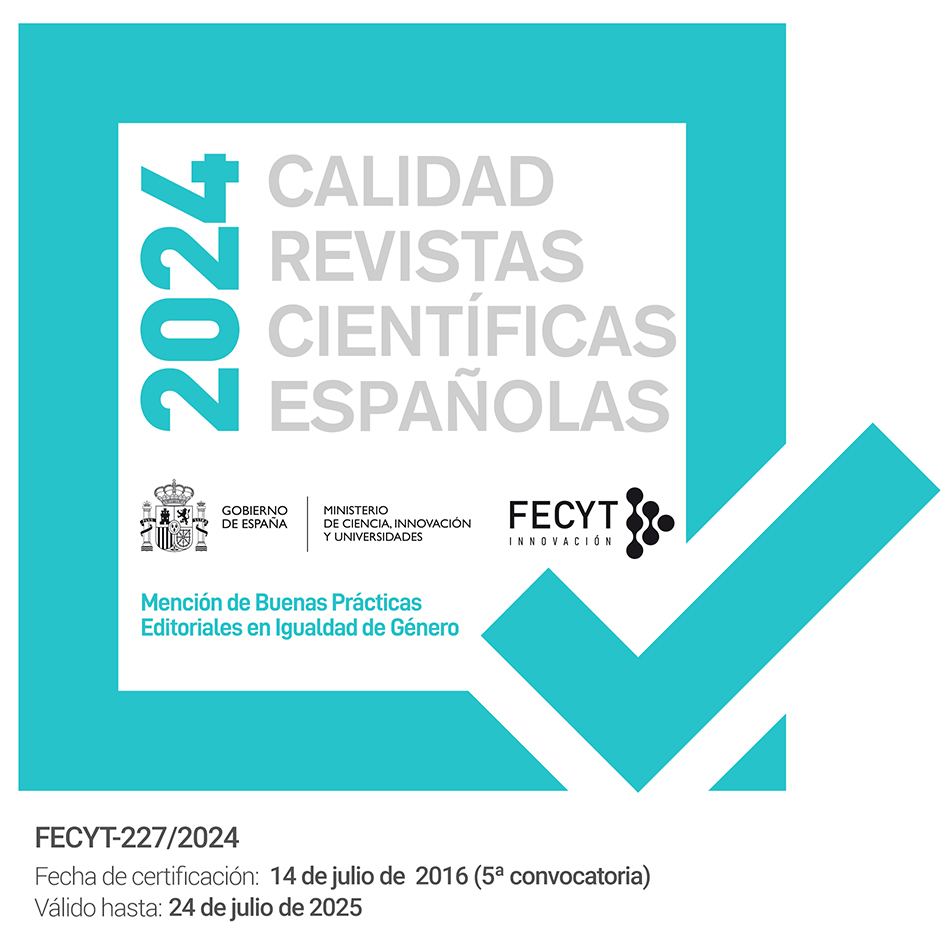Inhibitory effect of isolated Lactobacillus from oral cavity against bacterial Pathogens and its effect on health promotion
DOI:
https://doi.org/10.30827/ars.v60i1.7943Keywords:
Lactobacillus, Health condition, Antibacterial activity, Oral cavityAbstract
Aims: To determine the inhibitory effect of oral Lactobacillus against bacterial pathogens and investigate correlation between presence of Lactobacillus strains and health promotion.
Method: One hundred saliva samples were collected from oral cavity of domestic dairy consumers and were investigated for the isolation and identification of Lactobacillus strain by conventional culture and sequencing of 16SrRNA. Furthermore, well diffusion assay was performed to determination of antibacterial activity of Lactobacillus strains against bacterial pathogens including Salmonella typhimurium, Klebsiella pneumoniae, Shigella sonnei, Shigella dysenteriae, Enterococcus faecalis and Enterococcus faecium. Finally, association between health condition and isolation of Lactobacillus were investigated and obtained data using questionary form were analysed by chi-square test.
Results: Thirty Lactobacillus strains recovered from 100 hundred saliva samples. The most common isolated strain was L. gasseri (n=18) and followed by L. vaginalis (n=3) and L. salivarius (n=3). All Lactobacillus strains demonstrated antibacterial activity against at
least one of the investigated pathogens. However, the strongest results were obtained by L. vaginalis against K. pneumonia. The correlation between the presence of thirty Lactobacillus strains and health promotion not found. However, only L. gasseri species has significant positive impact on health in their hosts (P < 0.05).
Conclusion: Only some Lactobacillus species have a positive impact on health promotion. Despite of weak activity against the investigated pathogens, L. gasseri has a positive impact on the mental problem (intense anger and depression) of their hosts.
Downloads
References
Wannun P, Piwat S, Teanpaisan R. Purification and characterization of bacteriocin produced by oral Lactobacillus paracasei SD1. Anaerobe. 2014;27:17-21. Doi: 10.1016/j.anaerobe.2014.03.001
Sutula J, Coulthwaite L, Verran J. Culture media for differential isolation of Lactobacillus casei Shirota from oral samples. J microbiol methods. 2012;90(1):65-71. Doi: 10.1016/j.mimet.2012.03.015
Kumar A, Kumar D. Characterization of Lactobacillus isolated from dairy samples for probiotic properties. Anaerobe. 2015;33:117-123. Doi: 10.1016/j.anaerobe.2015.03.004
Davoodabadi A, Dallal MMS, Foroushani AR, Douraghi M, Harati FA. Antibacterial activity of Lactobacillus spp. isolated from the feces of healthy infants against enteropathogenic bacteria. Anaerobe. 2015;34:53-58. Doi: 10.1016/j.anaerobe.2015.04.014
Teanpaisan R, Piwat S, Dahlen G. Inhibitory effect of oral Lactobacillus against oral pathogens. Lett Appl Microbiol. 2011;53(4):452-459. Doi: 10.1111/j.1472-765X.2011.03132.x
Piwat S, Teanpaisan R, Thitasomakul S, Thearmontree A, Dahlen G. Lactobacillus species and genotypes associated with dental caries in Thai preschool children. MoleculOral Microbiol. 2010;25(2):157-164. Doi: 10.1111/j.2041-1014.2009.00556.x
Petricevic L, Domig KJ, Nierscher FJ, et al. Characterisation of the oral, vaginal and rectal Lactobacillus flora in healthy pregnant and postmenopausal women. Europ J Obst Gynecol Reprod Biol. 2012;160(1):93-99. Doi: 10.1016/j.ejogrb.2011.10.002
Jørgensen MR, Kragelund C, Jensen PØ, Keller MK, Twetman S. Probiotic Lactobacillus reuteri has antifungal effects on oral Candida species in vitro. J Oral Microbiol. 2017;9(1):1274582. Doi: 10.1080/20002297.2016.1274582
Azimi S, Kafil HS, Baghi HB, et al. Presence of exoY, exoS, exoU and exoT genes, antibiotic resistance and biofilm production among Pseudomonas aeruginosa isolates in Northwest Iran. GMS Hyg Infect Control. 2016;22(11).
Jalilpour Y, Abdollahzade B, ParviziFard G, Aghazadeh M, Bialvaei AZ, Kafil HS. A simple route for preparation of pH-sensitive hydrogels by using egg white proteins in Alginate scaffold for the encapsulation of probiotics. Ars Pharmaceut. 2017;58(3):1-10.
Dal Bello F, Hertel C. Oral cavity as natural reservoir for intestinal lactobacilli. System Appl Microbiol. 2006;29(1):69-76. Doi: 10.1016/j.syapm.2005.07.002
Gholizadeh P, Eslami H, Yousefi M, Asgharzadeh M, Aghazadeh M, Kafil HS. Role of oral microbiome on oral cancers, a review. Biomed Pharmacother. 2016;84:552-558. Doi: 10.1016/j.biopha.2016.09.082
Gholizadeh P, Eslami H, Kafil HS. Carcinogenesis mechanisms of Fusobacterium nucleatum. Biomed Pharmacother. 2017;89:918-925. Doi: 10.1016/j.biopha.2017.02.102
Rammelsberg M, Radler F. Antibacterial polypeptides of Lactobacillus species. J Appl Microbiol. 1990;69(2):177-184.
Pan Y, Wang F, Sun D-W, Li Q. Intestinal Lactobacillus community structure and its correlation with diet of Southern Chinese elderly subjects. J Microbiol. 2016;54(9):594-601. Doi: 10.1007/s12275-016-6131-7
Köhler B, Bratthall D. Practical method to facilitate estimation of Streptococcus mutans levels in saliva. J Clin Microbiol. 1979;9(5):584-588.
Jabbari V, Khiabani MS, Mokarram RR, et al. Lactobacillus plantarum as a Probiotic Potential from Kouzeh Cheese (Traditional Iranian Cheese) and Its Antimicrobial Activity. Probiotic Antimicrob Protein. 2017;9(2):189-193. Doi: 10.1007/s12602-017-9255-0
Kafil HS, Mobarez AM, Moghadam MF. Adhesion and virulence factor properties of Enterococci isolated from clinical samples in Iran. Indian J Pathol Microbiol. 2013;56(3):238. Doi: 10.4103/0377-4929.120375
Jabbari V, Mokarram RR, Khiabani MS, et al. Molecular Identification of Lactobacillus acidophilus as a probiotic potential from traditional doogh samples and evaluation of their antimicrobial activity against some pathogenic bacteria. Biomed Res. 2017;28(4):1458-1463.
Asgharzadeh M, Khakpour M, Salehi TZ, Kafil HS. Use of mycobacterial interspersed repetitive unit-variable-number tandem repeat typing to study Mycobacterium tuberculosis isolates from East Azarbaijan province of Iran. Pak J Biol Sci. 2007;10(21):3769-3777. Doi: 10.3923/pjbs.2007.3769.3777
Raei P, Pourlak T, Memar MY, et al. Thymol and carvacrol strongly inhibit biofilm formation and growth of carbapenemase-producing Gram negative bacilli. Cell Mol Biol. 2017;63(5):108-112. Doi: 10.14715/cmb/2017.63.5.20
Le Roy CI, Štšepetova J, Sepp E, Songisepp E, Claus SP, Mikelsaar M. New insights into the impact of Lactobacillus population on host-bacteria metabolic interplay. Oncotarget. 2015;6(31):30545. Doi: 10.18632/oncotarget.5906
Bosch M, Nart J, Audivert S, et al. Isolation and characterization of probiotic strains for improving oral health. Arch Oral Biol. 2012;57(5):539-549. Doi: 10.1016/j.archoralbio.2011.10.006
Štšepetova J, Sepp E, Kolk H, Loivukene K, Songisepp E, Mikelsaar M. Diversity and metabolic impact of intestinal Lactobacillus species in healthy adults and the elderly. British J nutr. 2011;105(8):1235-1244. Doi:10.1017/S0007114510004770
Strahinic I, Busarcevic M, Pavlica D, Milasin J, Golic N, Topisirovic L. Molecular and biochemical characterizations of human oral lactobacilli as putative probiotic candidates. Mol Oral Microbiol. 2007;22(2):111-117.
Vestman NR, Timby N, Holgerson PL, et al. Characterization and in vitro properties of oral lactobacilli in breastfed infants. BMC Microbiol. 2013;13(1):193. Doi: 10.1186/1471-2180-13-193
Ahirwar SS, Gupta M, Gupta G, Singh V. Screening, Isolation and Identification of Lactobacillus Species from Dental Caries of Children. Int J Curr Microbiol App Sci. 2017;6(1):497-503. Doi:10.20546/ijcmas.2017.611.205
Kirtzalidou E, Pramateftaki P, Kotsou M, Kyriacou A. Screening for lactobacilli with probiotic properties in the infant gut microbiota. Anaerobe. 2011;17(6):440-443. Doi:10.1016/j.anaerobe.2011.05.007
Koga T, Mizobel T, Takumi K. Antibacterial activity of Lactobacillus species against Vibrio species. Microbiol Res. 1998;153(3):271-275. Doi:10.1016/S0944-5013(98)80011-6
Liévin-Le Moal V, Servin AL. Anti-infective activities of lactobacillus strains in the human intestinal microbiota: from probiotics to gastrointestinal anti-infectious biotherapeutic agents. Clin Microbiol Rev. 2014;27(2):167-199. Doi: 10.1128/CMR.00080-13
Shim YH, Lee SJ, Lee JW. Antimicrobial activity of lactobacillus strains against uropathogens. Pediatr Intern. 2016;58(10):1009-1013. Doi:10.1111/ped.12949
Zhang J, Deng J, Wang Z, Che C, Li Y-f, Yang Q. Modulatory effects of Lactobacillus salivarius on intestinal mucosal immunity of piglets. Curr Microbiol. 2011;62(5):1623-1631. Doi:10.1007/s00284-010-9757-4
Matsuzaki T, Nagata Y, Kado S, Uchida K, Hashimoto S, Yokokura T. Effect of oral administration of Lactobacillus casei on alloxan-induced diabetes in mice. Apmis. 1997;105(7-12):637-642. Doi:10.1111/j.1699-0463.1997.tb05066.x
Simark-Mattsson C, Emilson CG, Håkansson EG, Jacobsson C, Roos K, Holm S. Lactobacillus-mediated interference of mutans streptococci in caries-free vs. caries-active subjects. Europ J Oral sci. 2007;115(4):308-314. Doi: 10.1111/j.1600-0722.2007.00458.x
Xu X, Hicks C, Li Y, et al. Purified cell wall from the probiotic bacterium Lactobacillus gasseri activates systemic inflammation and, at higher doses, produces lethality in a rat model. Crit Care. 2014;18(4):R140. Doi: 10.1186/cc13330
Published
How to Cite
Issue
Section
License
Copyright (c) 2019 Khalil Azizian, Sepehr Taghizadeh, Rasoul Hosseinpour, Asghar Tanomand, Elham Sheikhsaran, Naser Alizadeh, Behrooz Naghili, Hossein Samadi Kafil

This work is licensed under a Creative Commons Attribution-NonCommercial-ShareAlike 4.0 International License.
The articles, which are published in this journal, are subject to the following terms in relation to the rights of patrimonial or exploitation:
- The authors will keep their copyright and guarantee to the journal the right of first publication of their work, which will be distributed with a Creative Commons BY-NC-SA 4.0 license that allows third parties to reuse the work whenever its author, quote the original source and do not make commercial use of it.
b. The authors may adopt other non-exclusive licensing agreements for the distribution of the published version of the work (e.g., deposit it in an institutional telematic file or publish it in a monographic volume) provided that the original source of its publication is indicated.
c. Authors are allowed and advised to disseminate their work through the Internet (e.g. in institutional repositories or on their website) before and during the submission process, which can produce interesting exchanges and increase citations of the published work. (See The effect of open access).























